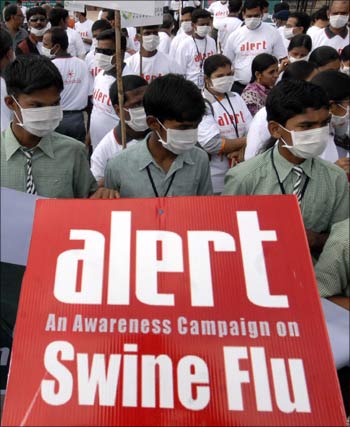
Healthcare reform was at the centre of the electoral debates in the United States. It is a live issue in most developed countries. Europe is looking at new healthcare models.
Japan is opening up to generics. Yet India - where healthcare is still an out-of-pocket (OOP) expense for the vast majority of citizens - is not part of the debate.
Should we be looking at free healthcare for all or affordable healthcare? Should we be controlling the price of drugs or offering direct subsidy?
Is public-private partnership the way forward? The Indian healthcare system currently combines the worst features of the public and private models - the public health system is in a poor state and private care is unregulated and high cost.

A surprisingly huge chunk of the cost of healthcare is accounted for by drugs and medicines. Household OOP expenditure is a sizeable 69 per cent of overall healthcare expenditure, according to the Centre for Legislative Research and Advocacy, and three-quarters of the total OOP health spend is on drugs.
Evidence suggests that while 70 per cent of a household's OOP health expenditure in urban India goes into buying drugs, in rural India the share is as high as 77 per cent.
Data from the National Sample Survey for 2004-05 shows that over 12 per cent of household non-food consumption expenditure was directed into paying for healthcare.
"If growth has to become inclusive and if human development a priority, we have to reduce the out-of-pocket expenditure that people incur in seeking healthcare," says health minister Ghulam Nabi Azad.
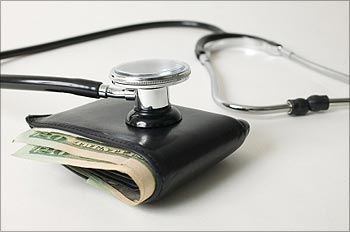
In addition to a handful of health insurers such as Star Health & Allied Insurance Company and Apollo DKV Insurance Company, ICICI Lombard and Bajaj Allianz, and 25 third party administrators who facilitate cashless hospitalisation for insured patients, there are some community-based group health insurance schemes introduced by non-governmental organisations, state governments and local bodies.
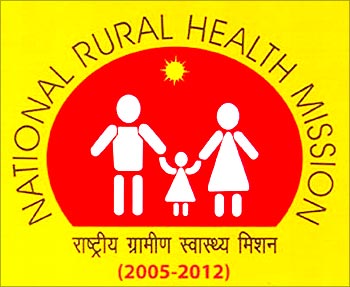
"The (central) government has operationalised the National Rural Health Mission (NRHM) since April, 2005 throughout the country with special focus on 18 states... The states are also committed to enhancing their allocation for the health sector by at least 10 per cent every year in addition to contributing 15 per cent of the NRHM allocation every year during the XIth plan."
Ghulam Nabi Azad, Health Minister
Bear with us: government* Public health expenditure is up from 0.9 per cent of GDP in 2001-02 to 1.41 per cent in 2008-09
* The XIth plan allocation is Rs 1,40,135 crore (Rs 1401.35 billion) for health, an increase of 227 per cent over the Xth plan
* Commitment to earmark 2-3 per cent of GDP in five years.
"Let the government take care of the bottom 40 per cent of the population and let the rest be catered to by the private sector. You then create a market of one billion people for healthcare at different price points. Once you have the demand, supply will follow."
Shivinder Mohan Singh, MD, Fortis Healthcare

The World Health Organisation defines essential medicines as those that satisfy the priority healthcare needs of the population. The list is prepared with due regard to disease prevalence, evidence on efficacy and safety and comparative cost-effectiveness, and differs from region to region or country to country.
In India, the essential drug list is called the National List of Essential Medicines (NLEM). The latest list contains 354 medicines and has been drawn up using the WHO selection criteria.
The issue
All medicines can prove essential or life-saving depending upon the situation. For instance, drugs for diabetes were not part of the essential drug list for a long period. The list is not updated often so it fails to include new medicines that are introduced in the market. India's current NLEM was updated in 2003.
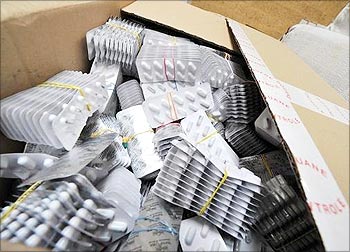
Measures
The Supreme Court has asked the Central government to formulate a pharmaceutical pricing policy that will bring all essential medicines under price control. The government has proposed a pharmaceutical policy which is being looked at by a group of ministers.
Even though price control can be brought in, there is no way to ensure continued availability of medicines as associations of drug manufacturers have said they will be compelled to discontinue production of those medicines whose prices are not realistic from their point of view.
Direct price control
The government has issued a list of 74 bulk drugs and fixed the price of all medicines that use any of these bulk drugs as an ingredient. The companies overcome this by substituting the price-controlled component and replacing it with alternative ingredients that remain outside the purview of price control while retaining the same brand name.
The National Pharmaceutical Pricing Authority issues periodic price revisions but it is yet to recover the bulk of the overcharging notices it has issued to companies due to pending litigations.

Plans are afoot to bring all medicines under price monitoring and control. However, the suggestions will require the Supreme Court's sanction as the apex court had ordered the government to prepare a pharmaceutical policy that keeps all medicines under price watch.
"To solve 20 per cent of the problem, you put 100 per cent (price) control. I think a direct method needs to be found to ensure access at low prices for these people, while the rest of the market can be competitive. In any case, we have the lowest prices in the world and competition will ensure that low prices will continue."
Atul Sobti, CEO & MD, Ranbaxy Laboratories

The debate
Despite several government-sponsored surveys indicating the negligible presence of spurious drugs in the country, the pharma industry continues to mix the issue of spurious drugs with those like counterfeiting and sub-standard drugs to ensure strict action against economic offenders.Spurious drugs
These are drugs that have no therapeutic value and are harmful to human health. They are made by illegal players from unlicensed or unapproved centres. Government surveys show less than 1 per cent presence of such medicines in the Indian market.Sub-standard drugs
These are drugs that are legally manufactured but lack therapeutic claims a major problem in India. Government surveys show the problem could be as high as 9-10 per cent. The medicines could lose quality due to poor storage conditions, bad supply chain management, inferior packing or manufacturing defects.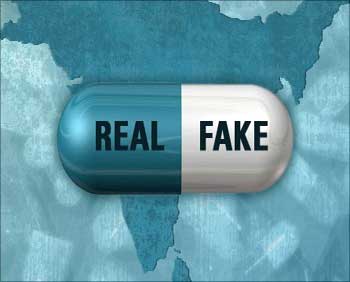
No figures are available, but the industry complains that it is causing them huge economic losses. Counterfeit medicines that pass off as some popular brands might be of the same or even better quality but they could also be spurious, though all spurious medicines need not be counterfeit. By definition, counterfeiting is more a trade mark offence than a health hazard.
"Counterfeit is a health hazard. But it is also a serious economic offence as it undermines genuine trade. We are in the process of incorporating separate and clear definitions for spurious drugs, counterfeit medicines and sub-standard medicines. The effort is to make sure that export or use of genuine medicines are not hampered due to lack of clarity in defining these three problems." - Dr Surinder Singh, Drugs Controller General of India

<B>Who is responsible?</B><BR>
Private agencies and government regulators that conduct raids to confiscate such illegal medicines find fault with pharmaceutical companies for not taking the issues forward.
The companies do not want to publicise the presence of counterfeit or spurious brands for fear of losing market share due to negative publicity to the brand. The government is constituting a fresh committee to revisit the matter. That's where the matter rests.
<I>"Improper transportation and storage of medicines is a serious problem in the country. Many quality products turn sub-standard by the time they reach consumers. In the semi-urban areas many retail chemists do not have functioning refrigerators. Most chemist shops also sell chocolates and find it more profitable to stock them in refrigerators rather than medicines. Others switch them off on weekly holidays to save on electricity expenses. In many places power load-shedding for eight hours or more a day is a routine. Temperature sensitive drugs are bound to degenerate in such an environment." -- Dr C M Gulhati, </B>Monthly Index of Medical Specialties
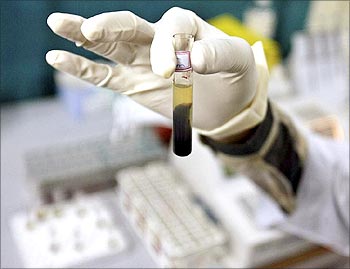
Drug manufacturing standards in India are as good as any other developed country. However, enforcement of rules is often inadequate.
The Drugs Controller General of India is in the process of strengthening this mechanism. There are over 100 manufacturing units in the country that have approval from leading drug regulators such as United States Food and Drugs Administration.
While Indian drug approval systems do not have the sophistication of US regulation, it is quite capable of ensuring the quality of medicines.
<P align="center">
<table bgcolor="#E4EAED" width=600 align=center cellpadding="2">
<tr>
<td><B>
<font face="TAHOMA" color="#000099" size="3">Sale of banned drugs in india</font></B><BR>
<font face="TAHOMA" size="2">
<P align="justify">
<I>Several medicines are legally available in India even though they have been either withdrawn or never been marketed in developed countries. </I>
</P>
<P align="justify">
<B>The drugs in question</B><BR>
Analgin, Cisapride, Nimesulide, Droperidol, Furazolidone, Piperazine (Source MIMS Monthly Index of Medical Specialities)
</P>
<P align="justify">
<B>Why does india continue to approve them?</B><BR>
The medicines have been proven to be useful and no adverse reactions have been reported.
</P>
<P align="justify">
<B>The counter-argument</B><BR>
India does not have an efficient adverse drug reaction monitoring system. Approvals have not been given on the basis of clinical trials in India but on the basis of data generated in other countries.
</P>
<P align="justify">
<B>Official stand</B><BR>
The Drugs Technical Advisory Board (DTAB), the expert body of the government that looks into such issues, is re-examining whether these drugs should be allowed to be marketed in India. On November 9, DTAB decided to form a sub-committee with a representative each of Indian Medical Association, Indian Council of Medical Research, a clinician, a physician, two pharmacologists, a drug regulatory department official and a veterinary specialist to look into the matter.
</P>
</font>
</tr>
</table>
</P>
<P align="left">
<table border="1" width="600" cellpadding="2" bordercolor="#EEEEDA">
<tr>
<td bgcolor="#EEEEDA"><B><font color="#990000" size="3">Drugs price scenario</font></B>
<P align="justify">
<font face="Tahoma" size="2">
Unlike in developed markets, the Indian medicine industry is highly fragmented with each medicine having dozens of brands manufactured by competing drug makers. With over 10,000 active drug manufacturers, there is sufficient competition to drive medicine costs. However, fast-selling products are not necessarily the low-priced ones among the variety of brands, but are often high priced. The reason is obvious: Medicines are chosen not by customers but decided by doctors or chemists. The price variation is huge, posing the question over the effectiveness of drug price regulation.
The MIMS list of variations in retail prices of different brands of the same medicine is best illustrated by this list, below:
</P>
<P align="center">
<table bgcolor="#E4EAED" width=100% align=center cellpadding="2">
<tr>
<td><B>
<font face="TAHOMA" size="2">
<P align="justify">
<B>Albendazole 400mg</B><BR>
Milibend (Glenmark) 1 tab Rs 6<BR>
Zentel (GSK) 1 tab Rs 17
<B>Atenolol 50mg</B><BR>
Atekind (Mankind) 10 tabs Rs 8<BR>
Betacard (Torrent) 10 tabs Rs 29
<B>Ciprofloxacin 500mg</B><BR>
Zoxan (FDC) 10 tabs Rs 39<BR>
Cifran (Ranbaxy) 10 tabs Rs 98
<B>Rituximab 100mg vial</B><BR>
Reditux (Dr Reddys) Rs 10,000<BR>
Mabthera (Roche) Rs 20,000
<B>Letrozole 2.5mg</B><BR>
Oncolet (Biochem) 10 tabs Rs 99<BR>
Femara (Novartis) 10 tabs Rs 1,815
<B>Pregabalin 75mg</B><BR>
Pregabit (Intas) 10 tabs Rs 69<BR>
Lyrita (Pfizer) 10 tabs Rs 768
</P>
</font>
</tr>
</table>
</P>
<P align="justify"></font></P>
</tr>
</table>

While companies are not allowed to increase prices of medicines by more than 10 per cent in a year, there is no way to control the price at which they introduce the medicine in the market. Since less than 30 per cent of the medicines come under direct price control, the companies are free to fix the introductory price of the other products.